

A noble Hill organ, twice orphaned, finds a new home!
2018-11-30 - Sample Set SpotlightThe proud organ, built by William Hill for St. Paul's Church-Burton-on-Trent almost 150 years ago, now stands commandingly in its new home in St. Afra's Church in Berlin.
On the Sonus Paradisi website, the sample set makers proudly tell of the unique and interesting history of this venerable instrument. Twice orphaned, it was saved and spared the fate of many fine instruments, and given new life in a far-away place. The various builds and rebuilds have gone together to make the instrument what it is today - a fine old Hill - with some changes made over the years. In making my evaluations, I have not differentiated and identified the builder/maker of each individual stop, since what it is now IS the way it is. However, I do urge serious readers and evaluators to become familiar with the very interesting history of this venerable instrument.
A finely detailed summary of the history of the organ is available from Iain Stinson. This was enormously helpful to me in preparing this spotlight / review. Iain was very gracious in allowing me to benefit from and use his work and research, and I THANK HIM for this. Rather than copying or "re-saying" what he has already said, here is the direct link we you can read all about the organ's life. Iain goes through very thorough details about Hill's original work, the 1896 work and additions by Kirkland, the 1982 rebuild by Thompson, and the final work, which was done quite sympathetically by Rieger-Kloss in 2015.
http://iainstinson.com/hauptwerk/hillorgandetails.pdf
I sincerely recommend this fine work to you and vigorously endorse the information and effort involved. Thanks, again, Iain!
So, let's begin in the words of Sonus Paradisi...
The organ was built in 1860s by William Hill, originally for St. Paul's Church in Burton, before being transferred and installed in the Trinity Methodist and United Reformed Church in Burton-upon-Trent in 1896. This pipe organ has wowed worshipers and music lovers there for 150 years. Rev. Julia Pellett, superintendent minister of the Burton Methodist circuit, said: "It was one of the best organs around, and people who had never heard it before were completely taken aback by the sound of it, which was just brilliant." Due to dwindling attendances the church was closed recently, and the organ found its new home in the German capital, Berlin. It was installed in St. Afra church in Gesundbrunnen in 2015.
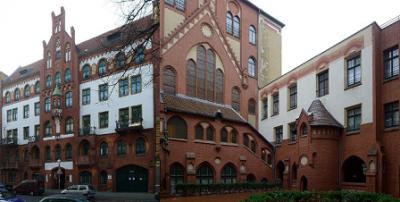
St. Afra's Church in Berlin - new home for the Hill organ.
The builder of the organ was William Hill (1789-1871), an apprentice of Thomas Elliot.. His career is remarkable within English organbuilding. In 1925, he became a co-owner of the company Elliot & Hill, later renamed to Hill & Son. The company soon earned an excellent reputation. Hill was an innovative figure, experimenting with large compasses (keyboards extended to low CC), large scales, new stop types, and high wind pressures. In 1840, his Birmingham Town Hall instrument was the first organ in the world to have a high pressure reed stop, a feature which later became the landmark of the English organ, named usually the Grand Ophicleide or Tuba Mirabilis. By the middle of the 19th century, he developed an organ style that represented a radical departure from the older English style. It was called the "German system". All manual divisions commenced on C, an independent and fully developed Pedal division was adopted, the stop list was enriched by a palette of German inspired flute and string stops, and swell divisions grew large. Hill pursued his quest for an instrument that combined power with musical versatility. He wanted to develop an organ that could play both the works of J. S. Bach as well as orchestral transcriptions. In 1889, the company led by his son built what was at that time the largest organ in the world for Sydney Town Hall in Australia. This organ had 5 keyboards, 127 stops and possessed a 64' Contra Trombone with full length resonators! The organ is very much still in existence, currently in excellent condition and - apart from its pitch being lowered to A=440 in 1939 - it's now very close to its original state, including the tubular-pneumatic key and stop actions.
In 1916, the company merged with Norman & Beard. The achievements of the next generation of organ builders (such as Henry Willis or T. C. Lewis) were heavily indebted to Hill's pioneering efforts.
The Anglican liturgy requires organ to support congregational singing, including the accompaniment of the famous British boys and girls choirs, as it underlines their singing with voices that are unique, dynamic, colorful, highly differentiated, yet also form a consistent whole. The flexibility of the English organ is also in accordance with the secular use of organs, which became popular in the Victorian era. The great Town Halls began to install organs to present concerts of Romantic organ music and large orchestral compositions. A fusion of German and French tastes was adapted in England to form a kind of organ that could be used for both liturgical and concert purposes. The organ from Burton (now Berlin) has more than 2000 pipes, 48 sounding stops on 3 manuals and a pedal.
A close view of the Hill case, now in Berlin.
William Hill (1789-1871) must surely be counted as one of the fathers of the romantic organ, along with Eberhard Friedrich Walcker, and Aristide Cavaillé-Coll. But while Cavaillé-Coll is famous and regarded as a genius, very little is available about William Hill. Despite the fact that I consider myself quite knowledgeable about "English organs," I have to confess that I really don't know that much about William Hill and his ground-breaking work. Whatever I do know about him, it is certainly FAR from enough!
In learning more about him, I've been able to come across several very informed discussions dealing with him, his work, and his real importance in the world of the English organ. From these findings, I've put together a framework showing the development in organs at the time. In truth, I'm not even sure whose words I may be quoting, but I give thanks for their knowledge, and hope that I have used their expertise in ways that would please them, if they were to read it. In NO way am I claiming that I just happened to know all about William Hill and the organs that he built, as this is NOT the case! So, in this sample set spotlight, I am learning WITH my readers.
I decided to intersperse facts with my recordings, which will serve to illustrate certain sounds, and hopefully will help to substantiate my opinions - which are ONLY opinions. After going through the "story" of Hill, the organs he built, and the musical history of the period, I went through each division, stop-by-stop, again expressing my opinions about the particular rank. Then I gave a brief discussion about the Hauptwerk Experience of using the sample set. Finally, I've given my conclusions about the organ and the sample set.
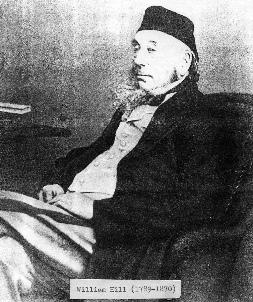
William Hill - the man who changed English organ building.
"Modern" organ building in England "started" with John Snetzler (1710-1785), the Swiss-born builder who did most of his work in the United Kingdom. I use the word "started" as a beginning point of our discussion and exploration, so, let's read what William Leslie Sumner says in his famous book, "The Organ. Its Evolution, Principles of Construction and Use." In this we'll something about Snetzler and just how William Hill gets into the picture.
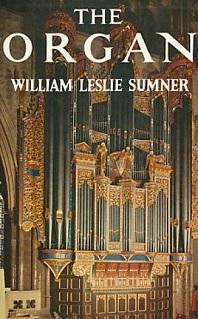
Sumner's Book - "The Organ"
Here's the Hill, in A .E. Floyd's Sketch in F, showing a wide range of sound, and ending up with everything she has at the end, including the Tuba, but without sub and super couplers.https://www.contrebombarde.com/concerthall/music/31024
Snetzler's spectacular 1791 case at Beverly Minster.
"John Snetzler commenced organ building in England before the middle of the eighteenth century.
He was succeeded by his foreman, a Swede named Ohrmann, in 1780. In 1790 Ohrmann took a partner, W. Nutt, who was afterwards joined by Thomas Elliot about the year 1803. Elliot built many durable and fine-toned instruments, including those at Montreal Cathedral, Waterford Cathedral, Christ's hospital, London, York Minster, All Saint's (now the Cathedral), Derby.
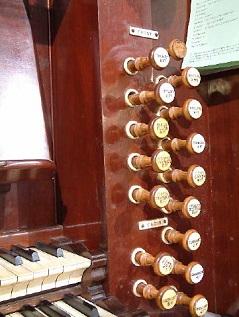
.jpg)
Stop knobs and all-original console of another Hill organ.
In 1825, Elliot took William Hill, his son-in-law, as partner. Hill was born in Spilsby, Lincolnshire, in 1789, where there is a memorial window to him in the church. Upon the death of Elliot in 1832 Hill remained alone until 1837, when he was joinded by Frederick Davison, who left the next year to become a partner of John Gray. The firm was then known as W. Hill & son and from its workshops went the organ at Birmingham Town Hall, in which the Tuba was the first high-pressure reed to be made in this country. Amongst other notable instruments were the reconstructed organ in Westminster Abbey, the large instruments in Melbourne Town Hall, Edinburgh Reid Hall, and the small four-manual organ in Turvey, Bedfordshire, England."
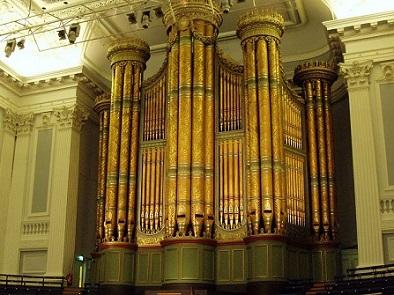
The grand organ in Birmingham Town Hall.
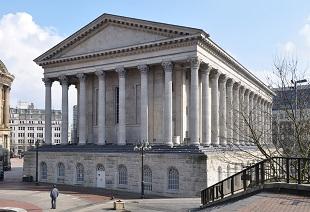
The exterior of Birmingham Town Hall.
Now let's listen to the Three Meditations by Eric Thiman.
The first, Poco andante, serioso, shows the rich, somewhat "stringy" foundations. You'll also hear the Great Stopped Diapason 8', as well as the Swell Oboe 8'. http://www.contrebombarde.com/concerthall/music/31053
The second, Andante espressivo, features the Viol d'Orchestre 8' of the Choir, along with tremulant, which makes for a very successful "violin solo." You'll also hear the Great Stopped Diapason have some solo lines, and the accompaniment is largely on the Swell strings. https://www.contrebombarde.com/concerthall/music/31054
The third, Andante, quasi pavana, showcase the Swell flutes, and also make use of the Great Open Diapason Small 8' as a solo in the tenor register. https://www.contrebombarde.com/concerthall/music/31055
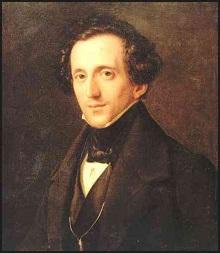
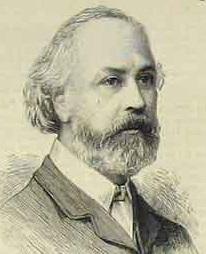
Felix Mendelssohn (1809-1847) and Edmund T. Chipp (1823-1886). Chipp gave the fist complete performance of Mendelssohn's "Six Sonatas" at the Hill Organ Factory on December 13, 1848).
Hill's astounding rise to prominence and early flowering is really based on two important things: the first was the he was in the right place at the right time! It was Felix Mendelssohn (1809-1847) who energized London organists to the point where they had to have their traditional little instruments boosted in both tone and scope. Gone where the days of "short compass" and meager "one-octave pedal boards, with only "pull-down" pedals, used to play nothing more than long pedal points.
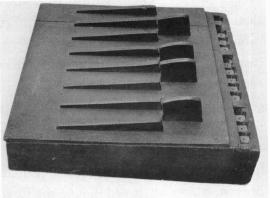
The Snetzler pedalboard from the organ at Christ Church, Cambridge, Massachusetts, USA. NOT quite the thing for involved pedal solos!
The other reason for Hill's success, and this is a BIG one, is that he listened to organists of experience! The opinions of those justly held in high regard mattered, and set the direction that all new organ building must take. English organs simply had to become "real instruments," with color, power and full compass manual and pedal keyboards.
Here are Five Short Pieces founded on Hymn-Tunes by C. Hylton-Stewart. The five pieces show many of the colors that make up this instrument, and the registrations are detailed with the upload. https://www.contrebombarde.com/concerthall/music/31209
Take a listen to the brief Prelude on "Hayling" by Albion Percy Alderson. Here you will hear just "how stringy" the Hill can sound, but hopefully in a pleasant and pleasing way!https://www.contrebombarde.com/concerthall/music/31219
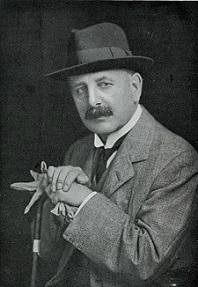
Arthur George Hill (1857-1923), grandson of William Hill, and head of the Hill firm from 1893 until 1916, when it merged with the firm of Norman and Beard.
British organists now had a real and intense interest in the treasures of organ building to be found on the continent. Think also that at this time, Britain was the wealthiest country in the world and church building was going on at a frantic rate. We were poised to have the best organs that money could buy.
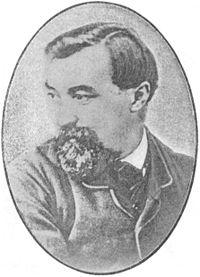
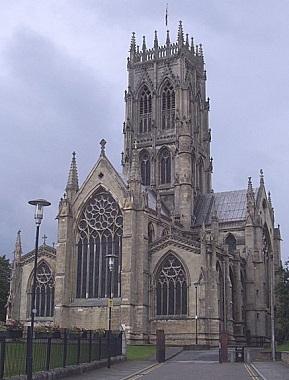
Edmund Schulze (1824-1878) and the exterior of St. George's Church, Doncaster, now Doncaster Minster, where he built his famous 5-manual organ.
Several organists, after tours abroad, decided that they wanted to see instruments of "continental tone" in English instruments, along with "continental-sized specifications." Gone forever where the days when "full organ" meant a few diapasons and maybe a trumpet! You soon have the major imports from Cavaillé-Coll and Schulze arriving, and the best of home-grown builders, especially Hill, were strongly encouraged to build instruments in a wholly new style. Indeed, the builders who didn't want to build massive, hearty organs were soon without much work!
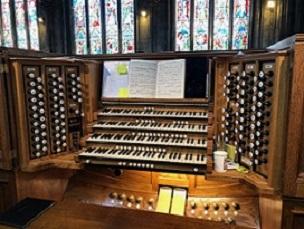
The current console of the Doncaster Schulze, now 4 manuals and with all the "English accessories."
Speaking of massive, let's hear the Hill in a massive moment in the Postlude in A Minor by George Calkin. Just the type of BIG SOUND to excite organists and listeners at the time! https://www.contrebombarde.com/concerthall/music/31848
While we've got hold of Calkin, let's listen to his sweet, and I think very sincere delicacy, Hommage à Mendelssohn, which is doubly appropriate as we acknowledge the tremendous position of importance that Mendelssohn held, particularly in bringing the "modern organ" to England. Here we have the Swell Oboe 8' with tremulant, played mostly in three part chords, as in imitation of a trio of singers. I believe that this sound is absolutely period perfect correct!https://www.contrebombarde.com/concerthall/music/31849
Hill's early mentor was Henry John Gauntlett. (9 July 1805 – 21 February 1876, in London) was an English organist and songwriter known in British music circles for his authorship of a large number of hymns and other pieces for the organ.
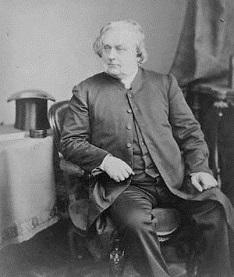
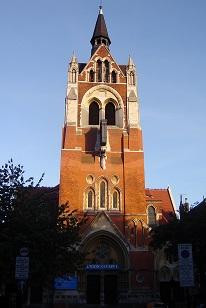
Henry G. Gauntlett and the exterior of the Union Chapel were he designed the organ and served as organist.
He was intended for a career in law, and he remained a lawyer until he was almost forty years of age, when he abandoned the profession and devoted himself to music.
Two contrasting works by Worcester Cathedral organist, Hugh Blair, serve demonstrate some more of the Hill's personality. The first, Romance (Two Pieces, No. 1), features the Orchestral Oboe 8' of the Choir, which is played against the strings of the Swell. The dark and hypnotic textures come off nicely, and while a little hard to manage perfectly, sound sensual and again, period correct. https://www.contrebombarde.com/concerthall/music/31846
By contrast, the "Elgarian" Allegro Grandioso (Two Pieces, No. 2) show the full Hill sound. Perhaps it's not as "grand" as a big Harrison, which would come along some 50 years later, but this real, red-blooded grandeur!" https://www.contrebombarde.com/concerthall/music/31847
Before moving on, let's hear Martin How's Elegy (in memory of Gerald H. Knight). This was the very first piece that I recorded on the Hill sample set, and in many ways it was the most "difficult" to do. It's a real "button pusher," and my own ignorance made me want to hear the Hill sounding like a 1930's Willis. At the time, I was very dissatisfied with the outcome, but listening now, some 10 weeks later, I'm really very pleased. It well show the Hill at its "most romantic," playing music and producing sounds not yet musically conceived. This piece shows all the ensemble, as well as a number of fine solo colors. https://www.contrebombarde.com/concerthall/music/31041

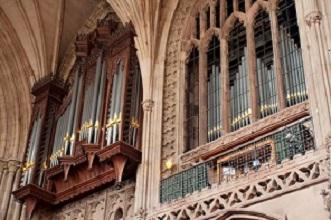
Lichfield Cathedral exterior and restored Hill pipework.
Getting back to Gauntlett, he was organist at a number of leading London churches, including St. Olave's in Tooley Streeet, Southwark from 1827 to 1846, where he designed a new grand organ which was built, installed and perfected to his satisfaction between 1844 and March 1846, as well as of Union Chapel, Islington from 1852 - 1861. Eventually the degree of Mus. Doc. was conferred on him by the Archbishop of Canterbury, being the first to receive such a degree from that quarter for over 200 years. He did much to raise the standard of church music both mechanically and musically. In 1852 he patented an "electrical-action apparatus" for organs. He wrote much music and over 1,000 hymn-tunes, but he is most remembered for his tune, Irby, the Christmas carol we know as Once, in royal David's city.
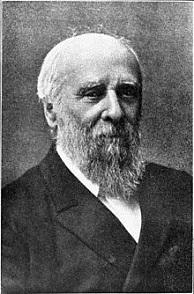
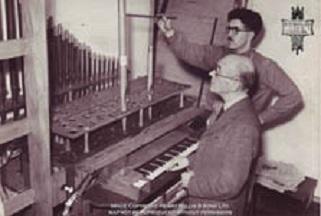
Henry "Father" Willis I Henry Willis III and Henry Willis IV
Gauntlett was a really imaginative thinker and a bit of an eccentric. When it came to specifications, some of his are utterly remarkable. However, English builders didn't really know how best to build big organs and you get a number of rather strange attempts. For instance, the endless duplications to be found in Father Willis's original organ at St.George's Hall, Liverpool, and the weird mixtures (without quints) to be found at St.Giles' Camberwell - Bishop etc.
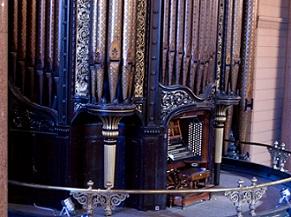
The mighty Willis in St. George's Hall, Liverpool.
Even if Mendelssohn had not come to England, the organ revolution would have come anyway, but what a shot in the arm that was! Suddenly British organist and listeners experienced the glories of the finest music ever written, such as the works of Bach, and absolutely had to have organs fit to play such music on.
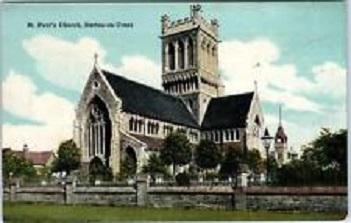
An old postcard showing St. Paul's Church, Burton-on-Trent, the first home of the Hill.
Toccatina in G Minor, by the Italian composer, Guglielmo Enrico Lardelli, certainly doesn't rank with the works of J. S. Bach, but it does show some of the neo-classic sound possibilities of the Hill. At this time you may ask why I didn't include any works by Bach in these recordings! The answer: I wanted to let the uniquely English voice of the Hill speak only through English composers. I almost succeeded, but in the end did use a few "non-English pieces" as my examples. https://www.contrebombarde.com/concerthall/music/31850
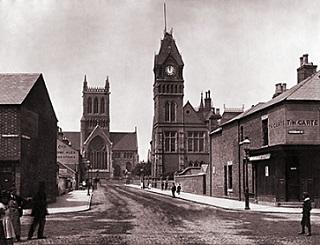
A view of St. Paul's, situated near the Town Hall.
Speaking of another piece that isn't Bach-like, let's hear the famous (or infamous!) Evensong by Eashtope Martin. In this one, you'll hear the full range of romantic sounds, from soft to almost full organ, and back again. If you're wondering where the "Vox Humana" came from, it's not a Vox at all! Instead, it's the Swell Double Clarinet 16' with tremulant, which is quite "fast," and the outcome is quite "vox-like". There are ALWAYS ways to work around short comings! ;-) https://www.contrebombarde.com/concerthall/music/31859
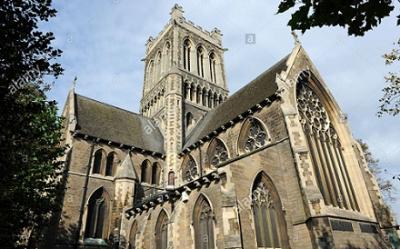
Another view of the grand St. Paul's Church.
By the way the solo sound at the beginning of Martin's Evensong is the Swell Suabe Flute 4'! This lovely little stop may well be a rank by John Snetzler. It's so nice that I wanted you to hear it in a piece that would probably sound MUCH more familiar to Snetzler's ears, the very attractive Flute Piece by Thomas Thorley. This uses ONLY the 4' flute. https://www.contrebombarde.com/concerthall/music/32159
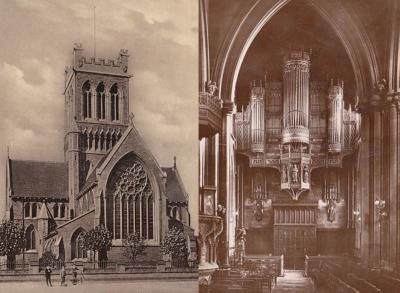
Old photos showing splendid St. Paul's, and the organ in the North Transept. Looking at the photo of the church, the organ was located in the transept (side extension) to the left.
While are our thoughts are more focused on "earlier sounds," let's see what an 18th century trumpet voluntary would sound like on our early-romantic Hill. Here's a very nice anonymous one from around 1780. The opening prelude features the Great Open Diapason Small 8', and the solo trumpet is then played on the Great Trumpet 8'. I used the Choir Clarinet 8' to "act like" an 18th-century "Cremona," but the sound, while "wrong," works nicely enough. Notice how the speech of the trumpet is slow? It's just something you have to deal with! The sound is NOT period correct, but I found it to be appealing and charming in its own way. What I'm saying is that I think the sound, while historically inaccurate, still his full integrity. So, here's the Trumpet Voluntary by an Anonymous London composer, c. 1780. https://www.contrebombarde.com/concerthall/music/32161
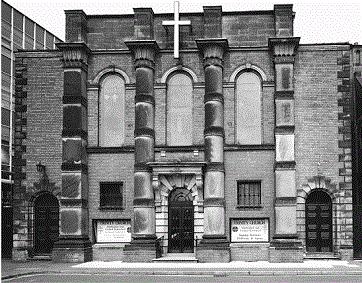
Trinity Methodist Church, Burton upon Trent exterior - the second home of the Hill.
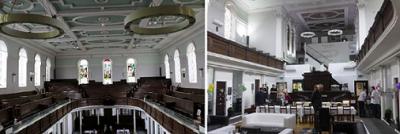
Now, it's a restaurant.
Another "earlier" piece is Charles Burney's Cornet V (Voluntary). This nicely demonstrates the Choir Cornet, which has a bright sparkle, but still not rough. The bass is played upon the Open and Stopped Diapasons of the Swell, with the swell box mostly closed. https://www.contrebombarde.com/concerthall/music/32094
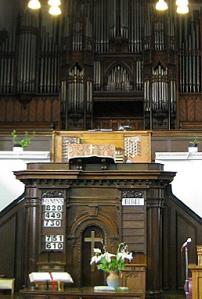
Viewing the Hill, console and pipework in the Methodist Church.
William Hill was born in 1789, so, his active organ-building career would have started around 1805 or so, but he would not have become an independent builder until at least 1810. If you look at the early organs of Hill, and other builders as well, there was something very striking about them. They always had tracker-action, often with simple pneumatic pedal-actions, and the tone of those instruments owed a lot to the late 18th century, as the sound was unforced with delightful flutes and modest wind-pressures throughout. The chorus mixtures were always the weakness, for they were usually not very complementary to the whole; the breaks often quite abrupt. Reeds were rather thin of tone and never remotely in the thunder and lightning category. The "solo tuba" had not been born yet! Hill's organs usually followed the "German method," using the "CC compass" developed by Gauntlett and real pedal organs.
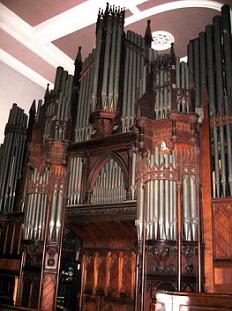
The grand case as it appeared in the Methodist Church.
Was Hill really building early "romantic" instruments? Very unlikely! These instruments were more in the type of a highly-developed, late 18th century organ containing certain "romantic" elements. These instruments were still classical in design and sound, but had bits of them enclosed in swell boxes and a few ranks of independent pedal stops. It has been said that the sound that a Hill produced was closer to the early "Snetzler sound," and still far away from the later, genuinely romantic "Arthur Harrison" sound that has come to typify, at least to many, THE English sound that we think of today.
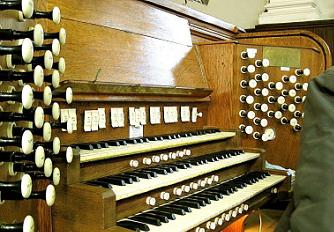
The Hill console in "original condition" - adapted.
Whether Hill was "thinking romantic," or not, here are two 20th-century pieces included, not because of their "musical importance," but to showcase some more sounds. Both of these were composed by William Felton. The first is Moonlight on the Chapel, showing the Great Stopped Diapason as a solo, with the accompaniment played upon the Swell Salicional and Stopped Diapason, the Voix celeste "replacing" the Stopped Diapason at the end. https://www.contrebombarde.com/concerthall/music/31958
The Hill console, sympathetically rebuilt by Rieger-Kloss, as it appears today.
The second, Scotch Idyl features the Choir Viol d' Orchestre 8′ (with tremulant), accompanied mostly by the Swell strings. https://www.contrebombarde.com/concerthall/music/31959
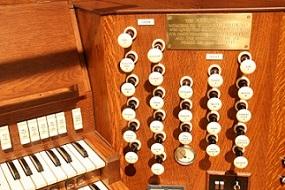
Let's just look at one famous example of Hill's work, the great organ of Birmingham Town Hall, which was originally built by the Hill firm in 1834, containing 4-manuals and 70 stops, but was subject to many rebuilds and alterations, all by William Hill, until a restoration by Willis in 1932. By 1956 the organ had been enlarged to 90 stops. The most recent restorations in 1984 and 2007 have been by Mander's of London.
The Great Tuba 8' on this Hill is smaller than what most of think of "as a tuba." Certainly other Hauptwerk examples of tubas, such as the ones at Hereford and Salisbury are MUCH bigger, and arguably more "exciting," but this tuba was probably quite impressive to listeners of the 1870's. It you notice, at least in our Hill, it's quite "fundamental," which is really what an English tuba is supposed to be like. Yes, you could boost the volume if you wanted to, but when you first do that, you've immediately lost the sense of "proportion and accuracy," so, I just used this as it is.
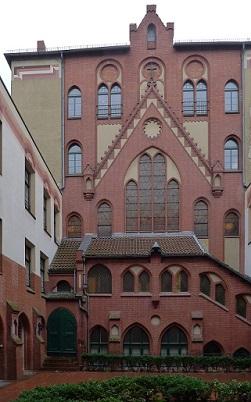
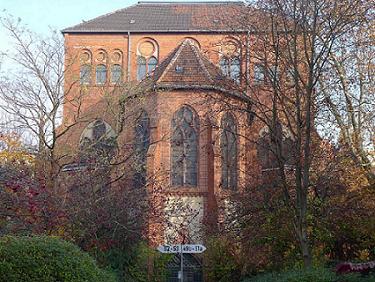
St. Afra's Church in Berlin looking at the West front (entrance) and the East end (behind the High Altar.)
Take a listen to it as a solo, in the middle to high range in Norman Coke-Jephcott's Bishop's Promenade. https://www.contrebombarde.com/concerthall/music/32062
Or, if a real fanfare is what you want, how about the one in Percy Fletcher's Festival March on "St. George"? https://www.contrebombarde.com/concerthall/music/32090 The fanfare part actually starts just before the 5-minute mark. Notice also that the fundamental rumble-thump of the Pedal reeds at 16' & 8'! I found this tuba very satisfying in this piece, and the bigger chords add to the impression of volume. You can hear the tuba again towards the end. Actually this piece shows quite a bit of what our Hill can do, and certainly has a punch to it.
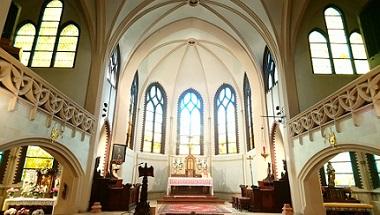
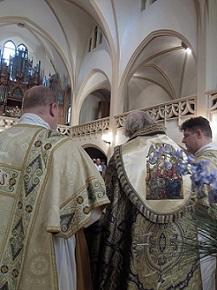
The High Altar of St. Afra's Church, and the Hill organ, visible in the rear gallery, during High Mass.
When Hill built the organ it DID have a Tuba, but that stop was much more in the manner and style of a big Trumpet, and nothing like the massive solo reeds that would follow by Willis. Stops that are loud enough to be heard above the entire full organ. As the instrument was rebuilt and enlarged, there can be little doubt but that Hill changed the character of the instrument as time went by. This implies that Hill was really being led in a particular direction by others, and throughout his working life, he was constantly endeavoring to create what his clients wanted.
Turning to Hugh Blair once again, his Solemn Prelude shows off the dark, diapason and reed dominated sound. I did want for "more acoustic" in this piece, but, learning to "play the room as well as the instrument," will make all of us better organists! You can also hear that the 32' Resultant Bass works well in this piece. https://www.contrebombarde.com/concerthall/music/31983
The Hill in Berlin, with the same beautiful case that it had when it was in the Methodist Church.
Many say that Hill demonstrated genius, but it was the genius of diligence and perspiration over a very long period; carefully taking in the views of others and developing a penchant for delivering what his clients wanted. One thing is certain, Hill remains one of the greatest of all organ-builder if only by the sheer quality of his work.
A portion of the case.
As another brief sound comparison, here are the foundation stops of the Great added, one by one in the old Gospel hymn, Shining Shore by George F. Root. We begin with the Open Diapason Small 8', add the Stopped Diapason 8' (notice that it's big!), add the Gamba 8' (it's also big!), add the Open Diapason 8', and finally the 4' Principal. The sounds are quite forthright and also quite "stringy." This is not the buttery sound of the Salisbury Willis diapasons, despite the fact that Salisbury was built with a decade of the Hill. https://www.contrebombarde.com/concerthall/music/32163
Looking up at the organ in St. Afra's.
Remember also that the people who held the purse-strings were great businessmen who travelled a lot, and many of them actively promoted music. If the organ developed, then it developed on the back of industrial wealth, a desire to educate the masses with "good music" (ie: transcriptions) and, above all, to make a lot of noise which could support great choral societies singing the oratorios. The organ for Birmingham, as first built, was essentially an "oratorio organ" rather than a recital instrument, but over a period of time, it developed into the organ we would recognize today.
Can this Hill play transcriptions? Surely! I didn't delve too deeply into them, but I did find two nice Russian piano pieces, and you'll see that the organ's sound palette is wide and varied. Both of these piece were transcribed by James Lyon, but I've never heard of either composer. The first, Prelude by Vladimir Psahloff shows the Choir Clarinet at the start (notice it's "narrower" than a big Willis stop), later builds quickly to almost full organ, gives the tuba a toot, and then falls away to the Swell Oboe with tremulant, and then finally to the Choir Viol d'Orchestra, with the 32' Resultant Bass on the final note. This piece required a fair amount of "fussiness" to get the results that you hear. https://www.contrebombarde.com/concerthall/music/32053
Hill pipework. Can you tell what rank this is?
The second transcription, Dornröslein by Alex. Danileff, is almost "theater organ-like." Once again, the Swell Oboe features prominently, but notice the wonderful Harmonic Flute 4' of the Great?!? I think it sounds almost like a "real" orchestral flute! I did have to play it in a "blowing manner," and an octave lower than written, but I think the effect was worth it. Also, the Swell Double Clarinet with trem. stands in for the Vox Humana. https://www.contrebombarde.com/concerthall/music/32054
Without doubt we can say that Hill was at the forefront of innovative design, and his contribution to the English organ world cannot be overestimated. William Hill was the most significant English organ builder of his generation. His innovative approach represents the transformation of late Georgian organ to mature Victorian instrument. He laid the foundations for the work of Willis and Lewis, amongst others, as well as for later generations of his own firm. His death coincided with the onset of the most prestigious period of his main competitor, Henry Willis.
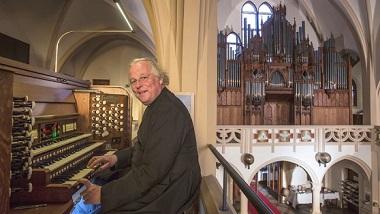
The Provost of St. Afra's, showing the relative position of console and pipework.
Let's take another listen to the Choir Orchestral Oboe 8'. This really is a wonderful stop. If it had a bit more acoustic it would be glorious, but it's plenty nice enough as is! I used Arioso in the Ancient Style by James Hotchkiss Rogers to demonstrate it, doing it back-to-back, first without the tremulant, and the second time with it. I felt that the trem. really helped to carry the line, and it was the winner in my estimation. https://www.contrebombarde.com/concerthall/music/32083
Hill set up on his own in the 1820s and became known for his attempts to increase the power and versatility of the organ. He expanded the swell division, increased pipe scales, introduced 16’ & 32’ pedal stops and extended keyboard compasses. Two of his early mammoth instruments were Birmingham Town Hall (1834), which contained the world’s first high-pressure reed and York Minster (1833). These two organs were built on an unprecedented scale and required successive modification to enable them to function correctly. In 1834 he built the organ of Kings College, Cambridge which was successively modified in 1859, 1889 and 1911. It was rebuilt by another firm (Harrison's) later in the 20th century.
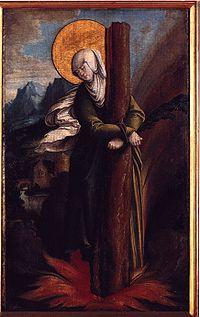
An image of St. Afra, martyr, found in St. Afra's Church, Berlin.
This is not an "easy" organ to play. You have to come to terms with the sounds (and the fact that they are not always liquidly smooth), and learn to use the room by allowing it to breathe. Silence is golden! Here we have Basil Harwood's Lullaby. I chose this to demonstrate the way the Swell strings sound with "stop changes" by the addition and/or subtraction of the Sub and Super couplers. If you look at the score, Harwood asks for "changes" to be made in this manner, and NOT be adding stops! Also, you see where he calls for the Great Clarabella, which is the Harmonic Flute. Once again, I used the fine 4' flute on the Great, but had to play it down the octave, and couple the Swell down to it, also at 4' (super coupler). The piece ends with the Choir Aeoline alone on the manual, and the Pedal Echobass 16', which is borrowed from the Swell, and with the swell box WIDE open. https://www.contrebombarde.com/concerthall/music/32108
Thinking once again about "small solo stops," I finally found a very nice use for the very keen Vox Angelica of the Swell! I had tried to use this several times but had little success. It "ruined" the chorus, and really is only intended to be used as a solo, at least to my way of thinking. But what kind of solo? By much searching I found the right piece, Mélodie by the French organist, Charles-Augustin Collin. I used the tremulant with it, and in the high register it sounded like a violin solo. When I wanted a bit more intensity, I added the Salicional and Voix celeste to it, and I think the outcome is good. The accompaniment was played on the Choir Aeoline 8' alone. Believe it or not, when I coupled it to the Pedal, I actually though it too "prominent," so, the Pedal is the 16' Bourdon alone, with the Echobass added at the "loud" part. You can judge the success for yourself. https://www.contrebombarde.com/concerthall/music/32160
During the period 1838-56, Hill focused on developing the “German System” organ which represented a departure from the then English style. Features of the system included what we now consider normal compasses, an independent pedal division, 16’ manual choruses, a large swell division and novel flute, string and reed registers. The aim was for power with musical versatility with some influence from the ‘rediscovery’ of the music of Bach. During this period he was responsible for laying the foundations for mature Victorian organ.
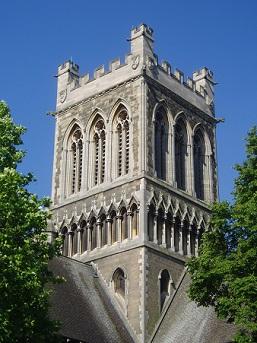
A detail of the central tower of St. Paul's Church, first home of the Hill.
A hymn is always a good way to "test" an organ, so, I chose a hymn, composed in Germany and popular in England, with the idea of paralleling the organ's English/German existence. The tune "Wir pflügen" is bright, and shows the basic choruses to good effect. The abbreviated intro is played upon the Choir Tuba alone. The first verse uses the Great chorus, full through the Mixture. The second verse uses the Great diapasons coupled to varying degrees of full Swell, and the third is the full Great chorus, coupled to full Swell, building to near full organ at the end. You can hear the German influence in the chorus, and in the reeds, which are not quite "fully English" yet. https://www.contrebombarde.com/concerthall/music/32096
Speaking of reed stops, here is the Trumpet Voluntary in C by Thomas Sanders Dupuis played 3 times: 1) Swell: Cornopean 8' / Great: Open Diapason Small 8', 2) Great: Trumpet 8' / Swell: Open Diapason 8', 3) Choir: Tuba / Great: Open Diapason (large), Principal 4', Fifteenth 2'. You'll notice that the Swell Cornopean is almost as big as the Great Trumpet. Also notice that once again, the Great reed is slow in speech. I don't advocate playing this on the tuba, but did so merely to demonstrate the sounds, etc. https://www.contrebombarde.com/concerthall/music/32162
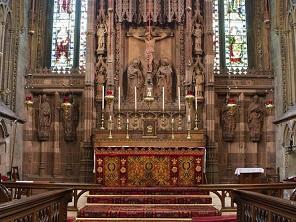
The High Altar of St. Paul's Church, Burton-on-Trent. Looks like a fine, traditional Anglo-Catholic parish.
The period 1856 to 1870 is represented by increasing sophistication in construction and tonal refinement in Hill’s work. He placed chorus reeds on higher pressures, used heavier metals in pipe-making and gave more spacious internal layouts in his organs. The influence of Schulze was seen in use of quint mixtures, wooden strings and small gedeckts.
While I wouldn't call this the ideal instrument for "modern music," Elves by Alec Rowley is absolute wonderful here. Granted there is a bit too much "jump" in volume when the Great Stopped Diapason appears, but it's still a very nice sound. Notice how nice the strings sound. Their "dryness" is actually enhanced by the feeling of intimacy in the room. https://www.contrebombarde.com/concerthall/music/32063
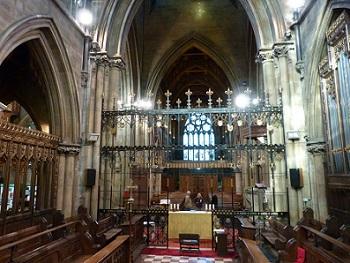
The Choir Screen of St. Paul's Church as it is today. Notice part of the organ to the right. Originally the Hill would have been in the North transept, to the left in this photo. The High Altar in the preceding picture is behind you in this view.
John Stainer was the most influential organist of his day, presiding from the throne of the grand organ of St. Paul's Cathedral in London. His Rêverie, with its dominant and dark reed (meaning Swell oboe) and diapason tone, is another real "period piece" when played upon the Hill. https://www.contrebombarde.com/concerthall/music/32082
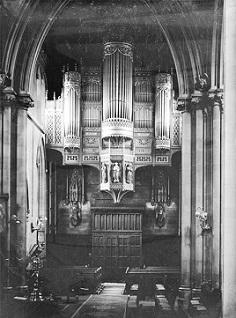
The splendid original case for the Hill while it was in St. Paul's Church.
Percy Fletcher's Prelude and Fugue on "Nun danket alle Gott" shows the Hill in full glory, from the neo-baroque toccata of the Prelude, to the awkwardly busy but delightful fuss of the Fugue! At the end you hear the Choir tuba get in a few chords, with the Swell partially closed, than fully open, as I reached up "doubling the "tuba chords" onto the Great. https://www.contrebombarde.com/concerthall/music/32095
A detail of the pipe and case as it looks today.
Now that we've covered the wide-ranging history of this masterpiece, let's go through it, division by division and stop by stop. However, before we take a full look at this Hill / Kirkland / Thompson in detail, exploring the individual stops and the possibilities that the instrument possesses, I have a confession to make! Actually, several confessions...
The first is that I began by disliking this instrument. I consider one of my skills to be able to handle any organ (real or virtual) quickly. However, this one, was difficult to come to terms with. I actually fought it, and was ready to give up on it several times. Was the reason because there was something "wrong" with the instrument? No. Actually, the fault was mine and my lack of understanding of the place and the role that the Hill firm occupied in the history of English organs.
I was wanting it to sound like a "late-Harrison," and even tried to force it to do so. When I couldn't achieve the results I wanted, I pretty much concluded it to be a sub-standard instrument. This was foolish, but, it must have been my mood at the time.
As I worked with, it suddenly dawned on me that this was NOT going to sound like a late romantic instrument, regardless of what I did. Rather, it was something of a "mid-way" instrument with "romantic leanings," but without the "buttery smoothness" of a big Willis or even more, of a grand Harrison. I simply hadn't done enough research about Hill, so, the fault and the ignorance was entirely mine.
I'm pleased to say that I started to realize all this and come to terms with it and the sounds that it produced before I read the opinions of some who are far more knowledgeable about Hill organs than I am, but am actually quite relieved that I started to "figure it out on my own," even though it took me 2 months to do so.
In my opinion the journey that using this organ allowed me to make was VERY well-worth the effort!
THE HILL - RANK by RANK
So, let's begin to go over this unique instrument, division by division and stop by stop. I suppose I should also tell you that all manuals run from "C - g3" and the pedal goes from "CC - f1".
As always, I think it's best to start with the Great organ, so, this is where we will begin.
GREAT
Bourdon 16'
Open Diapason 8'
Open Diapason Small 8'
Stopped Diapason 8'
Gamba 8'
Principal 4'
Harmonic Flute 4'
Twelfth 2 2/3'
Fifteenth 2'
Mixture III
Trumpet 8'
Tuba 8'
The Bourdon 16' is heavy and "dense" in sound and feeling. It really weighs down the full organ sound, so, if you don't want that "full-weighted" tone, you probably will want to leave this out of all but your fullest sounds. The Open Diapason 8' is large-scaled as would be expected. It will carry the sound and be the backbone of the ensemble. It is not the "ultra-refined" sound of a big, romantic diapason. There is a certain "hardness" to the tone, that would be somewhat refined if there were more reverberation, but the more you hear it, the happier you become with it. The Open Diapason Small 8' is still quite big, but it is more versatile than it's big brother, and can add richness to solo and ensemble. Both the opens of the Great, and the open of the Swell have a certain "stringiness" about them. Some ears will like and admire this characteristic, while others will prefer a "smoother" sound. I think this string-like sound is a direct result of the German influence that so impressed and affected Hill's work. The Stopped Diapason 8' is also large-scaled. It's got a "defined" sound about it, and the twelfth-harmonic is noticeable. There's a pleasant chiff to it, but again, it's not overly romantic or smooth. The Gamba 8' is quite big, and come make for an effective solo voice, particularly in the tenor register. I think this stop shows the "Schulze influence" that we've discussed earlier. The Principal 4' is bright, and well it's big enough to sit on top of the 8', it's not too overwhelming to go with the smaller open, perhaps with the stopped as well. The Harmonic Flute 4' is particularly beautiful, and can almost sound like a "real" orchestral flute, depending on how you play it, and the literature you choose. I used it as a solo voice 3 times in my recordings, but in each case, played it "down the octave." It's not a perfect "blend" with the stopped diapason, but it still does work nicely. The Twelfth 2 2/3' is an important stop on the English Great, and this one does the job well. I believe that I experimented with using the flutes 8' & 4' with the Twelfth to make a "little cornet," and while I don't think that I kept the recording, the resulting sound was quite nice. The Fifteenth 2' is bright, and you'll have a hard time "sneaking it on," but it does give a crown to the sound. The Mixture III is a disappointment, not because it's a bad stop, or that the result is harsh. However, as Iain Stinson has pointed out, they tierce rank has been removed, which really does affect (and remove!) the characteristic tierce-mixture sound from the chorus. This is unfortunate, but, what is there still works quite well. By the way, I actually tried to recreate the "original mixture" by coupling the Choir Tierce to the Great! Did it work? Well, I heard the tierce playing, but the sound just isn't the same as if it were actually "in" the mixture, as Hill designed it. The Trumpet 8' will please some and disappoint others. It's rich and quite full-toned in the tenor, and actually big on the bottom end, but it get's SMALler and smaller as it goes to the top. Yes, I know that ALL reeds do this, but this one is really tough to use as a solo stop, unless it's in the tenor. It does speak quite slowly, and gets slower as you go into the higher registers. The Tuba 8' is more like a big trumpet. It bears little resemblance to a "Willis party horn, but I like it quite a bit. On it's own, it seems pretty big, but it does tend to "duck its head" when competing with the full organ.
SWELL
Bourdon 16'
Open Diapason 8'
Rohr Flute 8'
Salicional 8'
Voix Celeste 8'
Vox Angelica 8'
Gemshorn 4'
Suabe Flute 4'
Fifteenth 2'
Mixture III
Double Clarinet 16'
Cornopean 8'
Oboe 8'
Clarion 4'
Tremulant
As on the Great, the Bourdon 16' is big. It can easily dominate the full swell, so, unless you want that "thickness," you may want to let the Double Clarinet play the part of the heavy. The Open Diapason is quite smooth. Not overly "pretty," it still serves the purpose well, and is fairly flexible. The Rohr Flute 8' is nice, with enough articulation and color to be useful and pleasing. The Salicional 8' is not at all aggressive, and has almost a "gemshorn-type" sound to it, resembling a string on the organs of some American builders. It's not at all like the characteristic French strings, and has no "scratchiness" about it. The Voix celeste 8' compliments it well, and makes for a warm sound. They are fairly big in sound, and while they are nice, I'd prefer a little softer sound from the swell strings. There is nothing aggressive about them. However, our friend the Vox Angelica 8' is quite another fellow! He's "stringy and pungent" to the max, and he needs tp be used "correctly," almost certainly as a solo voice. In the high register with the tremulant, it produces a sound "like a violin," which can be used effectively. I don't think that this stop would work well in any sort of chorus, and I've only used this for the one piece that I used to demonstrate the sound quality. The Gemshorn 4' is big and bright. It needs to be, as it "is" the missing 4' Principal in the division. It's an effective and well-designed stop, but it's another one that you'll have trouble "sneaking on" when building up your crescendo! The 4' Suabe Flute is delightful. Iain Stinson thinks this may be a Snetzler rank. Snetzler or not, I found it nice enough to play an entire piece using this rank alone! :-) The Fifteenth 2' is good, and works well in the chorus. The Mixture III is also quite "period correct," and I think it does still have the tierce in it, although I think only in the lower end of the scale. The Double Clarinet 16' really does sound like a clarinet when used as a solo voice. With the tremulant, it can even "pretend" to be a Vox humana! In the chorus, it has more of the effect of a Contra Fagotto, which it may have been before it was re-voiced. The Cornopean 8' is a very "gentle" reed, at least as "swell trumpets" go. It lives up to the qualities that cornopeans are most famous for - that of being smooth, but there is very little fire in the sound. The Oboe is very nice, with it's "dark presence." Sitting here and typing this, I think that the Oboe is a large as the Cornopean - maybe even bigger. It works well in chorus and as solo voice, and with the tremulant, it produces a real "period type of sound," which probably would have been regarded as high-romantic in 1870. Using the Oboe with Rohr Flute and tremulant will also give you another type of synthetic vox humana. The Clarion 4' is fairly bright, and tops off the full swell, although I think a bigger 8' reed would really help "fill it out." Speaking of the Tremulant, the "original trem" is the way to go, as it will produce that "period sound," which is so much a part of these instruments.
CHOIR
Gedact 8'
Viol d' Orchestre 8'
Aeoline 8'
Stopped Flute * 4'
Nazard 2 2/3'
Piccolo 2'
Tierce 1 3/5'
Larigot 1 1/3'
Orchestral Oboe 8'
Clarinet 8'
Tuba 8' (Great)
Tremulant
The Gedact 8' is full-toned and very pleasant. It's got enough color to be clean, but not "overly-harmoniced" to make using it difficult! The Viol d'Orchestre 8' makes for an excellent solo voice, particularly with the tremulant. It's "keen" but not painfully thin, and can work with the gedact to make something of a chorus. The Aeoline 8' was given as a memorial to a former organist named William Gouthewaite, and it's a nice example of the stop. It's sort of "stringy," but mildly so, and can be used alone, or combined as desired. Like most small-scaled stops, it's bigger at the bottom, and you have to watch that coupling it to the Pedal may actually be too "heavy" for usage, depending on what you're playing, etc. The Stopped Flute 4' is nice, and is smaller than the 8', so, the proportions are correct. In reality, this "stopped" flute is an "open" rank in the treble, but the effect is still very nice. The Piccolo 2' is clean and attractive, and the three mutations, the Nazard 2 2/3', the Tierce 1 3/5', and the unusually present Larigot 1 1/3' all work as expected and attractively so. Notice that the 8', 4', 2 2/3', 2, & 1 3/5' combined a fine Cornet - articulate and bright, but still within what we would want and expect in an early romantic instrument. The Orchestral Oboe 8' is a true gem! It's rich and full, with a nice sense of "attack" about it. You can here that it works equally nicely with or without the tremulant, depending on the way you're using it. I found that the tremulant really enhanced this stop, as it seems to increase the intensity, and helps to "carry the line" and make it sing. The Orchestral Oboe only plays down to "tenor C". The Clarinet 8' is an interesting stop, and quite good, although I didn't find it to be as "rich" as I would like it. The tone is "narrower" than and not as luxurious as a grand Willis clarinet, as the one in the Solo organ of Salisbury, but it goes well with the overall spectrum of the instrument. Again the tremulant will mold the character, permitting you to use it according to your preference. However, this is NOT a clarinet to use in French baroque music! It also only speaks to "tenor C." The Tuba 8' is borrowed from the Great. Again, the original tremulant is the one to use.
PEDAL
Resultant Bass 32'
Open Diapason 16'
Violone 16'
Bourdon 16'
Echobass 16' (Swell)
Principal 8'
Viola 8'
Bass Flute 8'
Choral Flute 4'
Trombone 16'
Tromba 8'
The Pedal Organ is very good and quite typical in that there are only 4 ranks of actual stops, with the others being "extensions" - meaning that a single rank of pipes is extended up or down with intent of making another stop/s from the one rank of pipes. The Resultant Bass 32' works well, and while it's not the same as real Open Wood 32', I found that I was able to use it both loud and soft situations, with the effect usually good. Occasionally the "doubled fifth" obscures the harmony, but not badly, and certainly not unless you're "listening out" for it! The Open Diapason is quite good, with a bit more "bite" than many "open woods," that only have "thump" and no definition about them. The Principal 8' is an extension of this rank. The Violone 16' and it's extension, the Viola 8' are excellent examples, and the sounds that they produce can be used in ways that can provide variety, and an "in-between" level of volume, when combined with the Bourdon 16'. Speaking of the Bourdon, it is quite big, but just about right, and it's extended to the Bass Flute 8' and the Choral Flute 4', which is big enough to act as a "melody rank" in the pedal. I thought the Trombone 16' is a fine example of a Hill reed! It's broad and quite "heavy," with a real emphasis on the "fundamental". To me, having a reed that is "too bright" is not the way to get the thunder from down under in an organ like this one! This reed, as well as its extension to the Tromba 8' are excellent, and bring about all that the can bring into the overall mix.
There are a few "special features" of the real organ that I should mention. These are incorporated in the sample set as well.
Reiger-Kloss added a crescendo pedal. To use it, it MUST be activated by pushing the "Cr+" button. I NEVER used this in any of my recordings, but I THINK I tried it once, and it seemed "OK" as crescendo pedals go. You can set it up any way you like, but why waste time playing with a gadget when you can learn how to master management of the stops?!? Believe me, learning how to "physically control" the instrument will make you a FAR better organist!
R-K also added a few extra "couplers," mostly of the "add sub octave" and "add super octave" type, and I did use these a few times.
There is also a "Melody Coupler," and while I THINK this will allow you to make the "top note" sound on a "special melodic stop," perhaps something like the Tuba, I didn't try it, so, I can speak with any authority about this.
The William Hill organ in terms of the Hauptwerk Experience
As with all Sonus Paradisi sample sets, the quality is of the highest order. I experienced no bugs or issues in using the set. The computer screens are excellent, and easy to use, and I show you a few examples of what the screens look like below.
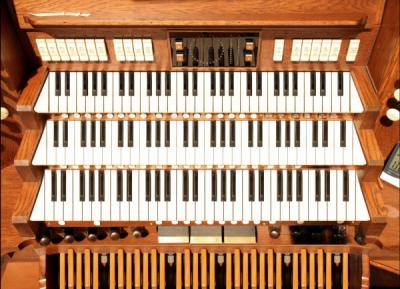
Hill Hauptwerk virtual console.
The virtual console is very nice with moving keys and swell-box indicators. The Crescendo Pedal indicator wheel is also visible on this screen. The coupler rocker-tabs do not move, nor do the expression pedals.
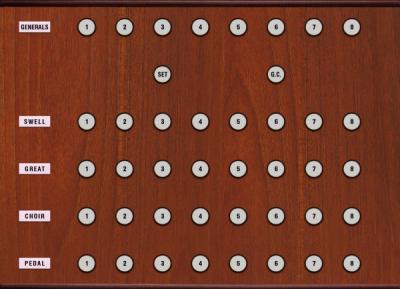
Hauptwerk screen for assigning general and divisional pistons.
This screen makes it easy to assign the "buttons" on your console that you intend to use for the virtual pistons.
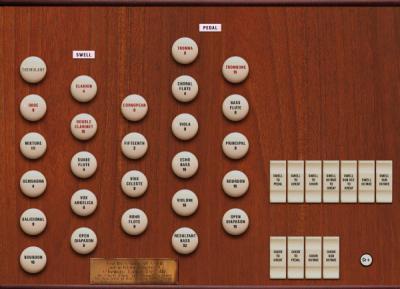
The left-side stop jambs panel (along with memorial plaque reproduction) for those who use two monitors.
Couplers rocker-tabs are also present, as well as the (infamous!) button to activate and deactivate the crescendo pedal (something I NEVER used!).
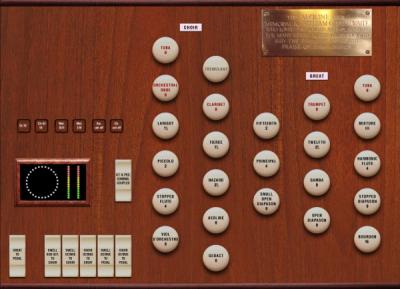
The right-side stop jamb panel (with memorial plaque reproduction).
You also the swell/choir box indicator lights (green, yellow, red) as well as the "crescendo wheel" indicator light. You also see the new "couplers" that Reiger-Kloss added. These are the "square buttons on the left hand side of the screen.
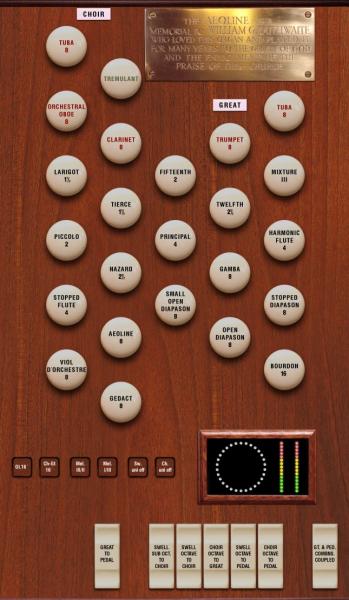
Left-side stop jamb in portrait view.
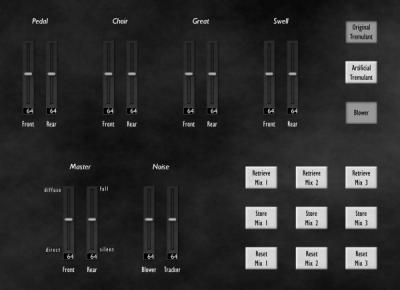
The main "mixer" screen.
This panel allows to select the original (ALWAYS used in my recordings) or the artificial tremulants, as well as the blower noise.
You can also determine your "listening perspective," and your location can be stored in 3 "mix buttons," and retrieved simply by pushing the "Retrieve Mix 1/2/3" buttons. ALL of my recordings were made at MAXIMUM DISTANCE FROM THE ORGAN.
For a grand finish for a grand organ, let's hear Felix Mendelssohn's Sonata No. 2 in C Minor, Op. 65, No. 2. The registrations are detailed with the recording. I tried to play this in what I would call a "stylistically correct performance for an English organist c. 1870."
https://www.contrebombarde.com/concerthall/music/32191
MY CONCLUSIONS
I found the experience of coming to terms with this organ, leaving my prejudices behind, finding my way, then respect for and appreciation of the uniqueness of the instrument, and finally loving it for what it is and for the important place that instruments like it occupy in the development of the English organ, a very rewarding journey. It wasn't the easiest of trips, and at times, I didn't want to make the next step, but I'm glad that I did!
The quality of the sample set is superb. Top-notch, as you would expect from Sonus Paradisi. The Hauptwerk screens are clear and easy to use, and installation was very simple.
If you are an enthusiast of English organs, this is definitely a set that you'll want. If you are looking for the grandest sound in rolling cathedral acoustics, you'll have revise your preferences a bit.
One thing that I can say is that I feel mastering this organ has made me a better organist, and for this I am grateful.
My sincere thanks to Jiri Zurek for giving me the opportunity to have a chance to play and evaluate the William Hill sample set.
Comments
I sincerely appreciate your support and kind words!
I know it's LONG, and I appreciate you taking the time to go through it! :-)
Peace,
David
FWIW I bought this set within an hour or two of its release and it has been my go-to instrument ever since. I do not think it is perfect but I think perhaps it is the most convincing English sample set available. Both Hereford and Salisbury are fine achievements but the sample sets are now showing their age. And I find this is a much more versatile and less "difficult" set than the very-impressive Armley.
Thank you for all the effort you have put into this.
I learned that I did not know by doing this. This one took a lot of work, but I feel it was worth it.
THANKS!
Peace,
David
This is really a great way to get acquainted with a new instrument.
Your extensive knowledge of English organs and its builders shines through in every sentence of this first-rate review and the idea of inserting the played examples between the paragraphs is another great thought and way to focus the readers attention to specific characteristics of the instrument.
Again: hats off, Dave.
You're really one of a kind and the privilege of having you on the concert hall is a blessing to us all!
I know this is VERY long, but there was just a lot to cover, and I do tend to go on a bit... ;-)
MANY THANKS for YOUR friendship and kindness. They are GREATLY appreciated by me.
Peace,
Dave
Have a blessed Advent time!
Oliver
I wish the same to you. :-)
https://www.ohta.org.au/organs/organs/StMarksFitzroy.html
https://www.youtube.com/watch?v=ZDKj5gck3XI
Thanks also for the link to the Harrison's saving. ALWAYS good to see! :-)